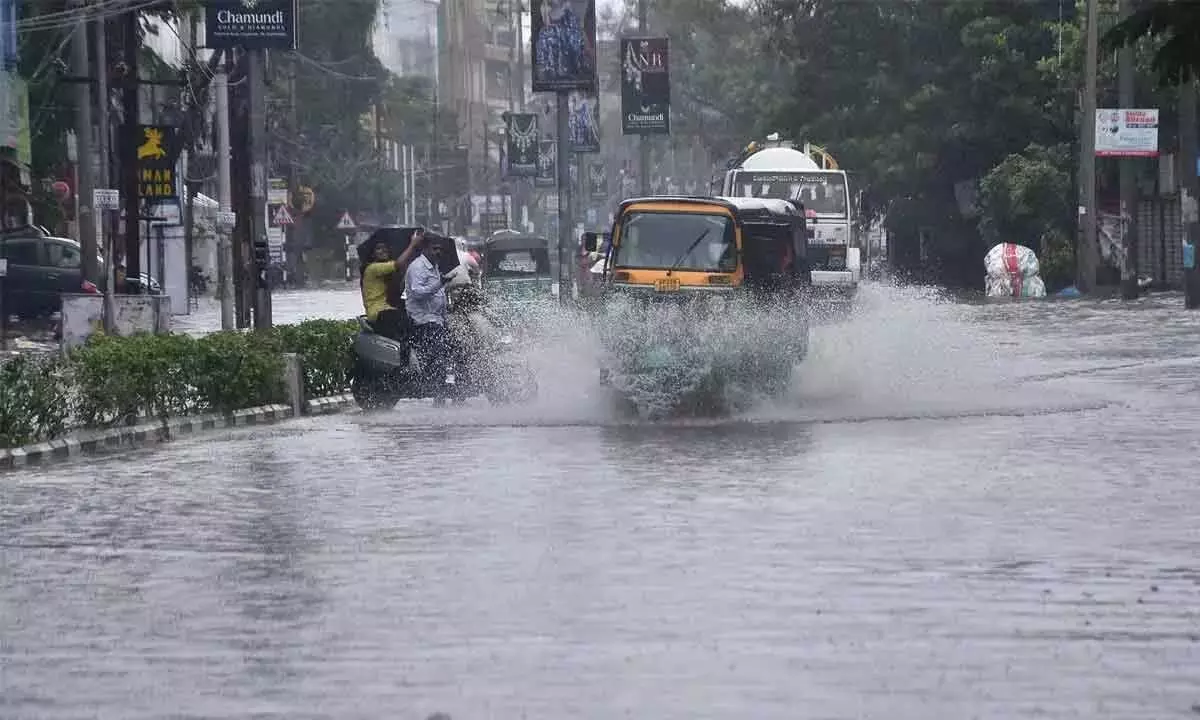You have heard about severe weather events happening across India lately. Recent heavy rains along India’s eastern coast have taken lives and caused major damage in Andhra Pradesh state. The tragic event needs your attention as these sudden storms bring fatal lightning strikes, flooding, and widespread destruction to local communities.
Storm Claims Lives Through Lightning Strikes
The powerful storm system moving through Andhra Pradesh has resulted in two people being killed by lightning strikes. These types of death occur when storm clouds build above rural areas where people often work outside without proper shelter from electrical storms. You should always seek cover when seeing signs of lightning during rainy season months.
Local media reports confirm these tragic events happened during sudden downpours that swept across eastern districts. These fatal incidents serve as stark reminders about weather dangers that exist during monsoon times when clouds gather quickly above fields and rural roads.
Widespread Damage Across Multiple Districts
The heavy rains have caused major problems beyond human losses. Your local government officials reported extensive damage to crops, homes, and vital infrastructure throughout several districts. Many roads remain underwater, making travel nearly impossible for rural communities seeking help after storm damage.
- Flooded roadways blocking access to emergency services
- Damaged power lines causing widespread outages
- Waterlogged crops threatening farmer livelihoods
Water levels rising above danger marks have forced many people from their homes as rivers swell beyond banks. You might know someone affected since these storms touch thousands of lives across regional towns and villages where drainage proves inadequate during heavy rainfall events.
Heavy Rains Lash Andhra PradeshL Weather Forecasts Predict More Rain Coming
According to meteorological experts, these rainy conditions could persist through the coming weeks. Your weather plans should include preparation for additional storms as cloud systems continue forming above coastal areas. These rainy patterns often follow seasonal trends but appear more intense than in normal years.
“People living along river banks and flood-prone areas should remain alert,” warns state disaster management officials. Their teams stand ready to assist those facing storm dangers. You should listen closely to local alerts and follow evacuation orders if issued for your area.
Heavy Rains Lash Andhra Pradesh: Government Response Efforts Underway
State authorities have begun relief measures across affected regions. Your tax money funds these emergency operations including rescue teams, temporary shelters, and basic supply distribution. These quick actions might help those caught without proper homes during continuing rainy weather patterns.
- Relief camps established in school buildings
- Emergency food packets are being distributed
- Medical teams deployed to prevent disease outbreaks
Chief Minister’s office has released funds to district collectors for immediate relief work. You might notice increased official presence in storm-affected areas as teams assess damage levels and provide needed support. These state workers often risk their lives helping others during dangerous weather events.
Heavy Rains Lash Andhra Pradesh: Preventive Measures You Should Take
During heavy rainfall seasons, taking proper precautions could save lives. Your family should create emergency plans including safe places inside homes during thunderstorms. These simple steps might prevent tragedy when lightning strikes nearby areas:
- Avoid open fields, hilltops, and isolated trees during storms
- Stay away from water bodies and metal objects
- Unplug electronic devices when hearing thunder
- Keep emergency supplies ready including drinking water
Being aware of nearby shelter options might prove crucial during sudden storms. Your community often designates certain buildings as storm shelters where people gather during extreme weather events. These locations usually offer better protection than small rural homes.
Climate Change Connection
Experts point toward changing climate patterns making these severe storms more common. Your world faces increasing weather extremes with heavier rains falling during shorter periods. These changes mean greater flood risks for coastal regions where water cannot drain quickly enough.
“What we’re seeing follows predicted climate models,” explains environmental scientist Dr. Reddy. “These intense rainy events happen more often now.” Their research shows troubling trends toward more deadly storm systems affecting eastern coast states including Andhra Pradesh.
Historical Context Of Regional Flooding
Andhra Pradesh has faced similar disasters throughout recent decades. Your state geography makes certain areas particularly prone to flooding when heavy rains arrive during monsoon months. These historical patterns help officials identify which regions need extra preparation before storm seasons begin.
Records show several major flood events since 2000 causing billions in damage. You might remember previous evacuations or relief efforts from years when similar rains struck nearby areas. These experiences shape current emergency response protocols designed around known flood zones.
Community Impact And Recovery
Local communities always face long recovery periods after major storms. Your neighbors might struggle for months rebuilding homes and restoring livelihoods after flood waters recede. These rebuilding efforts often require both government support and community cooperation to succeed properly.
Small business owners report significant losses from water damage and power outages. Your local economy suffers when shops close and farming stops due to weather events. These economic impacts extend beyond immediate storm damage through lost wages and reduced production.
The coming weeks will prove critical for recovery efforts as officials assess the total damage. Your attention toward helping affected communities through donations or volunteer work could make a substantial difference for those facing difficult rebuilding processes after these devastating rains.
Remember to check on elderly neighbors and those with limited mobility during severe weather events. Your quick action might save lives when storms strike with little warning. These community connections become vital lifelines during natural disasters affecting rural areas.








Be First to Comment